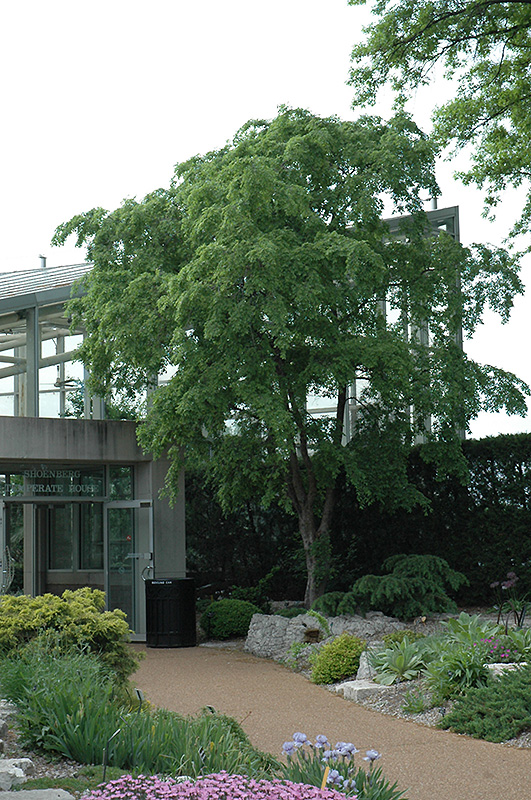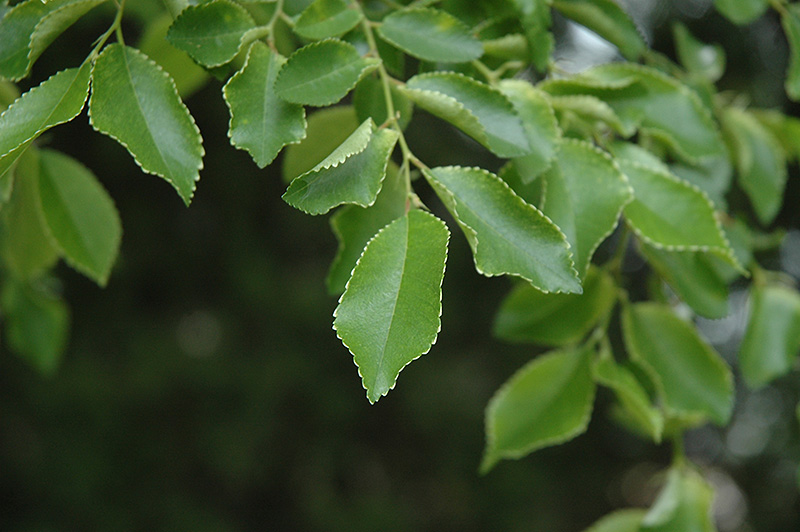>> Home
Height: 20 feet
Spread: 15 feet
Sunlight:
![]()
Hardiness Zone: 4b
Other Names: Chinese Elm, Lacebark Elm
Description:
A magificent small landscape accent tree featuring green leaves with frosted edges and a strongly vase shaped habit and interesting mottled brown bark, impressive in winter; highly resistant to Dutch elm disease, adaptable
Ornamental Features
Frosty Elm has attractive green foliage edged in white on a tree with a round habit of growth. The small serrated pointy leaves are highly ornamental and turn an outstanding harvest gold in the fall. The mottled brown bark is extremely showy and adds significant winter interest.
Landscape Attributes
Frosty Elm is a deciduous tree with a more or less rounded form. It lends an extremely fine and delicate texture to the landscape composition which can make it a great accent feature on this basis alone.
This is a relatively low maintenance tree, and is best pruned in late winter once the threat of extreme cold has passed. It has no significant negative characteristics.
Frosty Elm is recommended for the following landscape applications;
- Accent
Planting & Growing
Frosty Elm will grow to be about 20 feet tall at maturity, with a spread of 15 feet. It has a low canopy with a typical clearance of 4 feet from the ground, and is suitable for planting under power lines. It grows at a fast rate, and under ideal conditions can be expected to live for 70 years or more.
This tree should only be grown in full sunlight. It is very adaptable to both dry and moist locations, and should do just fine under average home landscape conditions. It is not particular as to soil type or pH, and is able to handle environmental salt. It is highly tolerant of urban pollution and will even thrive in inner city environments. This is a selected variety of a species not originally from North America.

